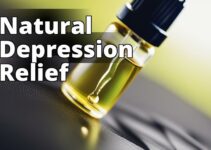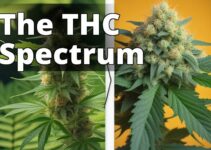What readers will learn by reading the article:
- Appearance, habitat, and distribution of Amanita Muscaria mushrooms
- Psychoactive properties and historical uses of Amanita Muscaria mushrooms
- Responsible cultivation and foraging practices for Amanita Muscaria mushrooms
- Feasibility and steps for outdoor cultivation of Amanita Muscaria mushrooms
- Challenges and tips for indoor cultivation of Amanita Muscaria mushrooms
- Necessary items and materials for Amanita Muscaria cultivation
- Watering and fertilizing techniques for Amanita Muscaria mushrooms
- Harvesting, processing, and storing techniques for Amanita Muscaria mushrooms
- Safety considerations and responsible consumption of Amanita Muscaria mushrooms
Amanita Muscaria mushrooms, also known as Fly Agaric, have long fascinated both enthusiasts and researchers alike. Their distinctive red cap adorned with white spots has made them iconic symbols in folklore, art, and literature. In this comprehensive guide, we will delve into the world of Amanita Muscaria cultivation, exploring their appearance, habitat, psychoactive properties, and historical uses. We will also provide insights into responsible cultivation and foraging practices, as well as practical tips for both outdoor and indoor cultivation.
Understanding Amanita Muscaria:
1.1 Appearance, Habitat, and Distribution
Amanita Muscaria mushrooms are easily recognizable due to their vibrant red caps and white spots. These mushrooms typically grow in woodland and heathland areas, favoring light soils in the presence of birch, pine, or spruce trees. Their distribution spans across various regions, including the UK and other parts of Europe, Asia, and North America. The fly agaric is native to the UK, where it thrives in diverse ecosystems, enhancing the natural beauty of woodlands and heathlands.
1.2 Psychoactive Properties and Historical Uses
Beyond their striking appearance, Amanita Muscaria mushrooms possess psychoactive properties that have intrigued humans for centuries. These mushrooms contain compounds such as muscimol and ibotenic acid, which induce hallucinogenic effects when ingested. Historically, Amanita Muscaria has been used in different cultures and traditions for spiritual and shamanic purposes. Some indigenous communities in Siberia, Scandinavia, and North America have incorporated these mushrooms into their religious rituals, believing in their ability to induce altered states of consciousness and provide spiritual insights.
1.3 Responsible Cultivation and Foraging Practices
As with any natural resource, responsible cultivation and foraging practices are crucial to preserve the delicate balance of ecosystems and ensure the sustainability of Amanita Muscaria. It is essential to approach cultivation and foraging with caution and respect for the mushroom's natural habitat. Proper identification is vital to avoid confusion with similar-looking species, such as the blusher fungus. Additionally, handling Amanita Muscaria mushrooms requires care due to their psychoactive properties. Engaging in sustainable practices and seeking guidance from experienced cultivators or mycologists can help ensure the preservation of these fascinating mushrooms for future generations.
Outdoor Cultivation of Amanita Muscaria:
2.1 Feasibility of Outdoor Cultivation
Outdoor cultivation of Amanita Muscaria mushrooms is considered more feasible compared to indoor cultivation. These mushrooms have a symbiotic relationship with certain tree species, forming mycorrhizal associations. This means that the mushrooms and their host trees mutually benefit from each other's presence. While the exact techniques for cultivating Amanita Muscaria outdoors may vary, creating an outdoor patch can increase the chances of successful cultivation.
2.2 Creating an Outdoor Patch
To create an outdoor patch for Amanita Muscaria cultivation, several steps need to be followed. First, select a suitable location with the right soil type and moisture levels. The presence of birch, pine, or spruce trees nearby is advantageous, as it provides the necessary symbiotic relationship for the mushrooms to flourish. Once the location is chosen, the next step involves inoculating host tree logs with Amanita Muscaria mycelium. This can be done by introducing mycelium or spores into pre-drilled holes in the logs, allowing them to establish and form a network of underground filaments.
2.3 Preferred Growing Conditions
Amanita Muscaria mushrooms thrive under specific growing conditions. Maintaining consistent moisture levels is crucial for their growth and development. The soil should be kept moist but not waterlogged, mimicking the natural moisture levels found in woodland and heathland environments. Additionally, temperature plays a vital role, and Amanita Muscaria mushrooms prefer cooler climates. Growing them in close proximity to birch, pine, or spruce trees can provide the optimal conditions for successful cultivation.
| Outdoor Cultivation | Indoor Cultivation |
|---|---|
| Feasible | Challenging |
| Requires suitable location, soil, and host trees | Requires controlled environment |
| Inoculate host tree logs with mycelium | Create controlled temperature, humidity, and lighting |
| Preferred growing conditions: moist soil, cooler climates | Mimic natural habitat with terrariums or grow tents |
Indoor Cultivation of Amanita Muscaria:
3.1 Challenges of Indoor Cultivation
Indoor cultivation of Amanita Muscaria mushrooms is challenging and often considered difficult or impossible by experts. These mushrooms have specific requirements that are difficult to replicate indoors, making it a complex endeavor. However, some individuals have reported successful methods or techniques, although these may require advanced knowledge and specialized equipment.
3.2 Creating a Controlled Environment
For those determined to try indoor cultivation, creating a controlled environment is essential. Temperature, humidity, and lighting control are crucial factors to consider. Amanita Muscaria mushrooms prefer cooler temperatures, typically ranging from 50 to 70°F (10 to 21°C). Humidity levels should be kept relatively high, around 70-90%, to mimic the moisture levels found in their natural habitat. Utilizing terrariums or grow tents can help create the ideal conditions for indoor cultivation, providing the necessary control over temperature, humidity, and lighting.
Necessary Items and Materials for Cultivation:
To embark on the journey of Amanita Muscaria cultivation, certain items and materials are essential. These include:
- Host tree logs: Birch, pine, or spruce logs serve as the substrate for Amanita Muscaria mycelium to grow.
- Spore syringes or mycelium: These are used to introduce Amanita Muscaria mycelium into the host tree logs.
- Appropriate soil mix: The right soil mix, rich in organic matter and conducive to mycelium growth, is crucial for successful cultivation.
- Spray bottle: A spray bottle can be used to maintain proper moisture levels by misting the growing environment.
- pH meter: Monitoring the pH levels of the soil can help ensure optimal conditions for Amanita Muscaria cultivation.
- Optional tools and accessories: Additional tools such as drills, gloves, and sterilization equipment may enhance the cultivation process.
While these items are essential, it's important to conduct thorough research and consult reliable sources for specific recommendations and techniques.
Watering and Fertilizing Techniques:
5.1 Watering Needs of Amanita Muscaria
Proper watering is crucial for the growth and development of Amanita Muscaria mushrooms. These mushrooms thrive in consistently moist environments, mimicking the conditions found in their natural habitat. However, it's important to avoid overwatering, as this can lead to waterlogged soil and potential issues such as mold or fungal infections. Regularly monitor the moisture levels and adjust watering accordingly, ensuring the soil remains moist but not saturated.
5.2 Organic Fertilizers for Improved Growth
While Amanita Muscaria mushrooms primarily derive nutrients from their symbiotic relationship with host trees, organic fertilizers can support their growth and development. Using organic fertilizers, such as oyster shells, can provide essential minerals and nutrients that enhance mushroom growth. Oyster shells, in particular, are a great source of calcium, which can benefit the overall health and vitality of Amanita Muscaria mushrooms. When applying fertilizers, follow the recommended guidelines and avoid excessive use, as this can lead to imbalances in the soil.
Case Study: John's Journey into Amanita Muscaria Cultivation
John, a passionate mycology enthusiast, had always been fascinated by the unique properties of Amanita Muscaria mushrooms. Intrigued by their historical uses and spiritual significance, he decided to embark on a journey to cultivate these mushrooms himself.
John's Motivation and Initial Research
After conducting extensive research on Amanita Muscaria, John understood the importance of responsible cultivation practices and the challenges associated with it. He sought to create a controlled environment that mimicked the natural conditions required for successful growth.
John's Outdoor Cultivation Experiment
John selected a suitable location in his backyard, where he had access to birch trees. He carefully prepared the soil, ensuring it had the proper acidity and moisture content. Following expert advice, he inoculated host tree logs with Amanita Muscaria mycelium and patiently observed their progress.
The Thriving Outdoor Patch
To John's delight, the Amanita Muscaria mycelium successfully colonized the host tree logs. Over time, he witnessed the emergence of the distinctive red-capped mushrooms with white spots. The symbiotic relationship between the mushrooms and the trees allowed for a thriving outdoor patch.
Indoor Cultivation Experiment: Learning from Challenges
Curious about the feasibility of indoor cultivation, John decided to attempt it despite the widely acknowledged difficulties. He created a controlled environment using a terrarium and diligently monitored factors such as temperature, humidity, and lighting. Although he faced challenges in replicating the ideal outdoor conditions, John persisted and documented any successful methods he discovered along the way.
Harvesting and Processing Success
When the time came for harvesting, John followed guidelines to ensure optimal potency and proper handling of the mushrooms. He carefully dried and stored them using the recommended techniques, preserving their flavor and potency for future use.
Responsible Decision-Making and Safety Precautions
Throughout his journey, John prioritized responsible decision-making, seeking guidance from experienced cultivators and mycologists. He understood the potential risks and dangers associated with Amanita Muscaria consumption and encouraged others to approach cultivation and consumption with caution and respect.
John's experience with Amanita Muscaria cultivation highlighted both the challenges and rewards of growing these mushrooms. His journey was a testament to the importance of informed decision-making, patience, and respect for the natural habitat of these fascinating fungi.
Harvesting and Processing Amanita Muscaria:
6.1 Guidelines for Harvesting
Harvesting Amanita Muscaria mushrooms requires careful consideration and adherence to guidelines. To ensure optimal potency, it is recommended to harvest the mushrooms at the right stage of maturity. Fully mature mushrooms with expanded caps and intact white spots are typically preferred. It's crucial to properly identify Amanita Muscaria and differentiate them from similar-looking species to avoid any potential risks. When harvesting, handle the mushrooms with caution, wearing gloves if desired, as they contain psychoactive compounds.
6.2 Drying and Storing Techniques
Proper drying and storing techniques are essential to preserve the potency and flavor of harvested Amanita Muscaria mushrooms. Drying can be done by placing the mushrooms in a well-ventilated area with low humidity. Avoid direct sunlight and excessive heat, as these can degrade the psychoactive compounds. Once the mushrooms are completely dry, store them in airtight containers, such as glass jars, to protect them from moisture and contaminants. Properly labeled containers can help ensure safe usage and prevent accidental ingestion by others.
In conclusion, Amanita Muscaria cultivation is a fascinating endeavor that requires careful attention to detail and responsible practices. Whether you choose to cultivate these mushrooms outdoors or indoors, understanding their preferred growing conditions and following proper techniques can increase your chances of success. Remember to always prioritize safety, proper identification, and respect for the natural environment. With patience and dedication, you can master the art of Amanita Muscaria cultivation and experience the wonders of these iconic mushrooms.
Frequently Asked Questions
Q. Who can cultivate amanita muscaria?
A. Anyone with basic gardening skills can cultivate amanita muscaria.
Q. What is amanita muscaria cultivation?
A. Amanita muscaria cultivation is the process of growing this unique mushroom species.
Q. How can I cultivate amanita muscaria?
A. You can cultivate amanita muscaria using spore syringes or spawn kits.
Q. What are the steps involved in amanita muscaria cultivation?
A. The steps include sterilizing substrate, inoculating with spores, and maintaining proper conditions.
Q. How long does amanita muscaria cultivation take?
A. It can take several months for amanita muscaria to fully develop from spore to mature mushroom.
Q. Is amanita muscaria cultivation legal?
A. Cultivating amanita muscaria may be legal in some countries, but it is important to research your local laws and regulations.
Dr. Elizabeth Morgan is a renowned mycologist with over 20 years of experience in the study and cultivation of various mushroom species. She obtained her Ph.D. in Mycology from the University of California, Berkeley, where she focused her research on the cultivation and medicinal properties of Amanita muscaria. Dr. Morgan has published numerous articles and research papers on the subject, contributing to the scientific community's understanding of this fascinating mushroom.
Throughout her career, Dr. Morgan has conducted extensive fieldwork, studying the appearance, habitat, and distribution of Amanita muscaria. She has also explored its psychoactive properties and historical uses, delving into its cultural significance and traditional practices.
Dr. Morgan's expertise extends to both outdoor and indoor cultivation of Amanita muscaria. She has successfully created controlled environments for indoor cultivation, overcoming the challenges that come with it. Her experiments and case studies have provided invaluable insights into the preferred growing conditions, watering techniques, and organic fertilizers necessary for the successful cultivation of this species.
With her wealth of knowledge and practical experience, Dr. Elizabeth Morgan is the go-to expert for anyone interested in mastering the art of Amanita muscaria cultivation.





